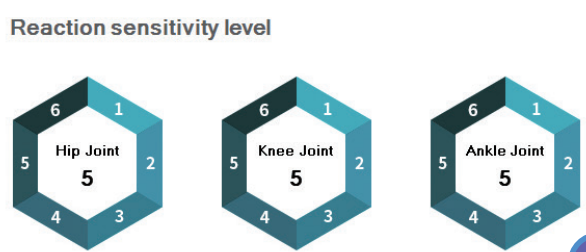In Walkbot Lower-Limb Robotic Rehabilitation, spasm detection(Reaction Sensitivity Level) is divided into 6 levels.
Depending on the patient’s body condition and the purpose of training, operator can adjust the spasm detection level differently.
Practical example
① Detection level 1 ~ 2
- In case of a patient requiring extreme care or very young pediatric patient② Detection level 3 ~ 4
- In case of light weight patient with less muscle mass
- less than 55kg body weight , 145cm ~ 160 cm tall
③ Detection level 4 ~ 5
- In case of normal weight patient with normal muscle mass
- About 55kg ~ 80kg , 160cm ~ 180 cm tall
④ Detection level 5 ~ 6
- In case of heavy weight patient
- In case of a patient who can induce voluntary walking training
- In case of a patient who can train with the aim of mitigating the stiffness.
 |
| Spasm detection (Reaction Sensitivity Level in Walkbot Lower-Limb Robotic Rehabilitation) |
It is also possible to set the spasm detection level differently about hip, knee and ankle joint.
The spasm detection level is applied equally right side and left side to avoid operator’s effort and prevent the confusion. In this case, we refer the weak side leg and choose the proper detection level.Operator can set the detection level relatively high for the purpose of voluntary training or mitigating stiffness, so we can avoid often interruption of training.
Comments
Post a Comment